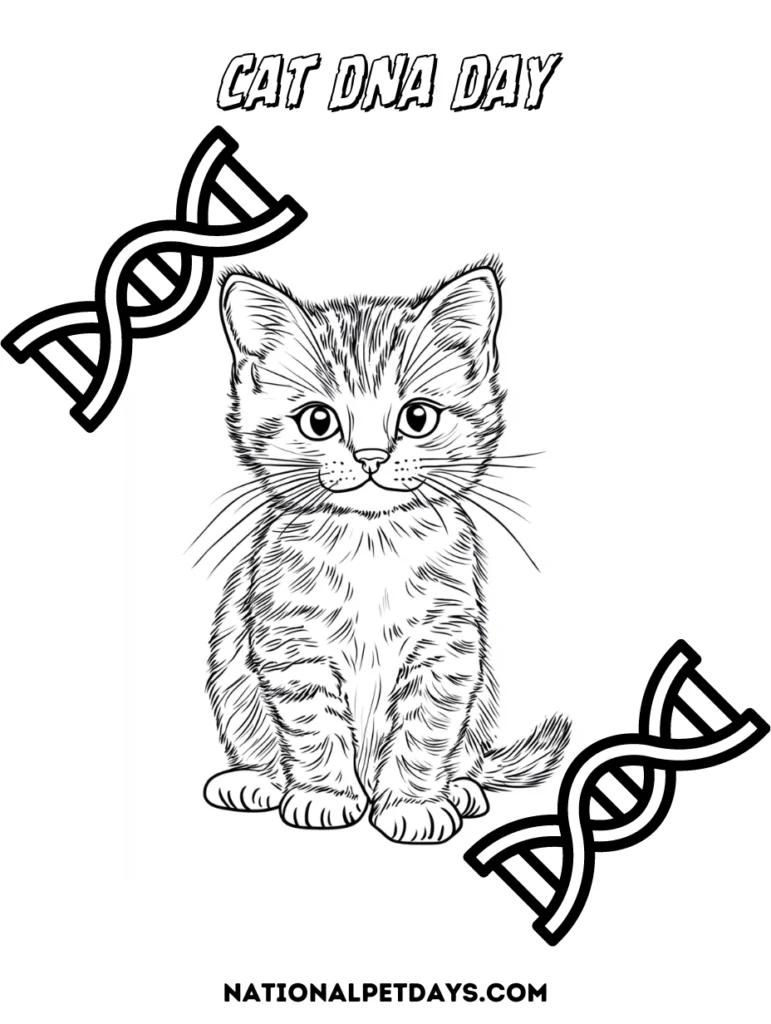When you bring a cat into your home, they quickly become a cherished member of your family. But have you ever wondered about the breeds that make up your cat’s lineage or if they’re predisposed to certain hereditary conditions? Cat DNA testing can help answer these questions and more, offering insights into your cat’s ancestry and potential health risks. Cat DNA Day, a celebration of the rapidly growing field of feline genetics, sheds light on these intriguing discoveries.

When is Cat DNA Day?
Cat DNA Day is celebrated annually on September 19. The date wasn’t chosen at random—the ninth month represents the nine lives of cats, while the 19th signifies the 19 pairs of chromosomes that cats possess. This pet holiday was launched in 2020 by the pet genetics company Basepaws.
What Can a Cat DNA Test Reveal?
A cat DNA test can provide a wealth of information about your feline friend. Here’s what you can learn:
- Breed Composition: The test reveals the various breeds in your cat’s ancestry, giving you a clearer picture of their lineage. This can be especially fascinating if your cat is a mix, as it uncovers the specific breeds that contribute to their unique appearance and behavior.
- Health Insights: The primary benefit of cat DNA testing is its ability to screen for genetic markers associated with various health conditions. This information allows you to be proactive in your cat’s care, helping you understand if they’re predisposed to certain diseases and enabling you to take preventive measures.
- Genetic Traits: The DNA report also includes information on specific traits, such as coat color, pattern, and other physical characteristics. It offers a detailed map of your cat’s chromosomes, highlighting the genetic makeup that defines their appearance.
- Carrier Status: DNA tests can reveal if your cat is a carrier of a recessive genetic marker associated with a disease. While being a carrier doesn’t mean your cat will develop the condition, it’s important information if you plan to breed them, as it could be passed on to their offspring.
How to Collect DNA from Your Cat
Collecting DNA from your cat is a simple and non-invasive process. Here’s how it works:
- Swab Collection: The test kit includes a swab that you gently rotate inside your cat’s cheek. The swab collects cells from the cheek, teeth, and saliva, which contain your cat’s DNA.
- Send the Sample: After swabbing, seal the swab in the containment unit provided in the kit and send it to the designated address of the DNA testing company.
- Receive Results: Once the sample is processed, you’ll receive a detailed DNA report, offering insights into your cat’s breed composition, health risks, and genetic traits.
How Accurate Are Cat DNA Tests?
While cat DNA tests provide valuable insights, they are most accurate in identifying potential health concerns.
Determining the specific breeds in your cat’s ancestry can be more challenging, as many cat breeds have been developed relatively recently from unique genetic mutations. As databases grow and more genetic information becomes available, the accuracy of these tests will continue to improve.
Fun Facts About Your Cat’s DNA
- Shared Genetics: Humans and cats share 90% of their DNA.
- Chromosome Count: Cats have 19 pairs of chromosomes, compared to 23 pairs in humans.
- Genetic Variations: Extra toes are one of the most common genetic anomalies in cats.
- Rare Coat Colors: A purely brown coat is rare in cats and is found in only a few breeds.
- Color Variations in Siamese Cats: The distinctive color points on Siamese cats are due to a recessive gene that causes cooler parts of their body to be darker, such as the ears and tail.
Cat DNA Day is a celebration of the fascinating world of feline genetics. Whether you’re curious about your cat’s breed, concerned about potential health risks, or just eager to learn more about their genetic makeup, cat DNA testing offers valuable insights. Mark your calendar for September 19 and take a moment to explore the mysteries of your cat’s DNA!
